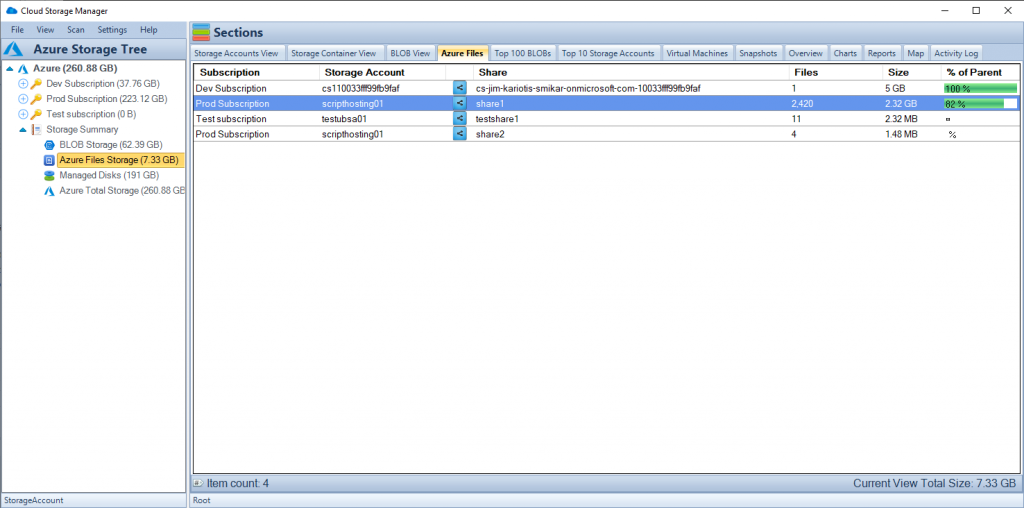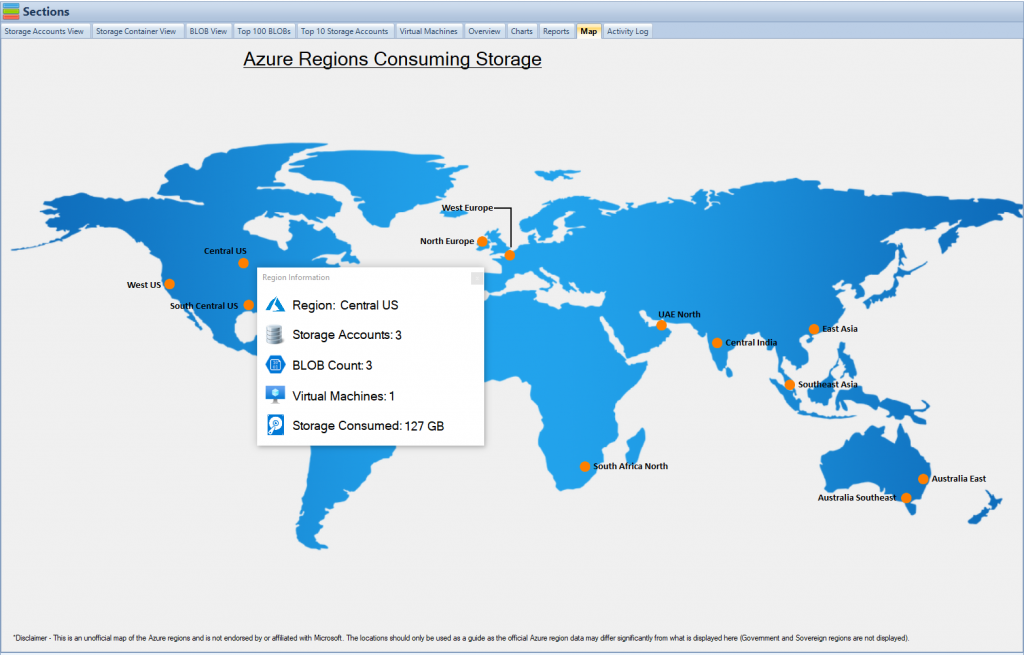Introduction to Azure File Storage
Azure File Storage, a component of Microsoft Azure’s broader cloud services, is a managed file storage service for the cloud. Its fundamental design is to create, manage, and share file systems securely and easily using standard protocols supported by most operating systems. It offers fully managed file shares in the cloud accessible via the industry-standard Server Message Block (SMB) and Network File System (NFS) protocols.
Key Protocols: NFS and SMB Explained
To comprehend Azure File Storage fully, we must unpack the two critical protocols it uses: NFS and SMB.
NFS: Detailed Technical Overview
Network File System (NFS) is a distributed file system protocol originally developed by Sun Microsystems. The protocol, based on the Remote Procedure Call (RPC) model, allows all network users to access shared files stored on computers of different types.
The latest version supported by Azure, NFS 4.1, introduces several enhancements over previous versions:
- Stateful and Stateless Operations: NFS 4.1 supports both stateful and stateless operations. While stateful operations require the server to maintain state information, stateless operations do not. Stateful operations include actions such as locking files, while stateless operations include reading and writing to files.
- Compound Operations: NFS 4.1 also introduces compound operations. In previous versions of NFS, each operation sent over the network would necessitate a response before another could be sent. Compound operations allow clients to send multiple operations to the server in a single request, reducing the latency associated with waiting for responses.
- Security Enhancements: NFS 4.1 offers better security with the Kerberos V5 authentication protocol. It also uses string-based names to identify users and groups, which eases the integration of NFS into a multi-domain environment.
SMB: In-depth Technical Examination
Server Message Block (SMB) is a networking file share protocol included in Windows 10 that provides the ability to read and write files and perform other service requests to network devices. SMB operates as an application-layer network protocol mainly used for offering shared access to files, printer access, serial ports, and miscellaneous communications between nodes on a network.
Azure supports SMB 3.1.1 protocol, which has several improvements:
- Persistent Handles: SMB 3.1.1 supports persistent handles, which are durable handles that can withstand brief network disruptions without disconnecting the user’s session. This provides users with a continuous connection even when there are network interruptions.
- Multichannel: SMB 3.1.1 also introduces multichannel, which allows clients to establish multiple network paths for the SMB session. This not only increases performance by enabling concurrent network input/output (I/O), but it also provides redundancy and failover capabilities.
- Encryption: To increase security, SMB 3.1.1 offers end-to-end encryption. This ensures that data is not compromised while in transit over the network, providing additional security for sensitive data.

NFS vs. SMB: A Comparative Analysis in Azure File Storage
To make an informed choice between NFS and SMB for Azure File Storage, it’s crucial to compare them across several key areas.
Interoperability and System Compatibility
When it comes to system compatibility, NFS has traditionally been the go-to choice for Unix and Linux systems. However, it’s worth noting that NFS 4.1, with its enhanced features, has significantly improved NFS’s interoperability with non-Unix environments.
On the other hand, SMB is natively supported on all versions of Windows and has excellent compatibility with other systems. SMB 3.1.1 is especially well-suited to Azure environments due to its support for persistent handles and multichannel operations.
Performance and Efficiency
Performance-wise, NFS shines in handling heavy data loads due to its support for stateful and stateless operations, as well as compound operations that reduce network latency. This makes NFS a robust choice for applications requiring the processing of large files or high-performance computing.
SMB, with its support for multichannel operations, provides superior performance in scenarios involving smaller file transactions or when used with applications that can take advantage of multichannel’s concurrent network I/O.
Security
Both NFS and SMB offer robust security features. NFS 4.1 uses the Kerberos V5 authentication protocol, providing robust security for Unix/Linux environments. SMB 3.1.1, however, provides end-to-end encryption, securing data in transit over the network. This is particularly beneficial for applications requiring a high level of data security.
Cost Considerations
The cost of implementing NFS or SMB in Azure File Storage will depend on your specific needs and the Azure storage tier you select. It’s crucial to consider the potential trade-offs between cost, performance, security, and compatibility when making your choice.
Practical Use Cases
Both NFS and SMB have practical applications that further shape the choice between them. NFS is typically the protocol of choice in scenarios where multiple users need to share and collaborate on large files in Unix/Linux environments. In contrast, SMB is often favored in Windows environments for sharing files and printers across the network.

The Pros and Cons: Evaluating NFS and SMB
Every protocol has its strengths and weaknesses, and NFS and SMB are no exceptions. NFS provides robust performance for large data sets and is ideal for Unix/Linux-based environments. However, it may pose some compatibility issues in non-Unix environments.
SMB offers excellent compatibility and is efficient for small file transactions, but it may not perform as well as NFS when handling large data sets.
In Conclusion: Making Your Choice
When deciding between NFS and SMB in Azure File Storage, the choice boils down to your specific needs, system environment, and performance requirements. Understanding the technical details, strengths, and weaknesses of both protocols will guide you in making an informed choice.
Frequently Asked Questions
- What is Azure File Storage? Azure File Storage is a managed file storage service for the cloud that allows for the creation, management, and sharing of file systems securely and easily using standard protocols supported by most operating systems.
- What are NFS and SMB? NFS (Network File System) and SMB (Server Message Block) are network protocols used to access and share files over a network. NFS is commonly used in Unix/Linux environments, while SMB is typically used in Windows environments.
- What are the key differences between NFS and SMB in Azure File Storage? NFS and SMB differ in terms of compatibility, performance, security, and cost. NFS tends to perform better with large data sets, while SMB is more efficient with smaller file transactions. NFS is commonly used in Unix/Linux environments, and SMB is native to Windows. In terms of security, both offer robust features but through different mechanisms—NFS uses the Kerberos V5 protocol, while SMB provides end-to-end encryption.
- Can I use both NFS and SMB protocols for the same Azure File share? No, an Azure File share can be accessed either via NFS or SMB protocol but not both simultaneously. The choice depends on your application requirements, operating system, and specific needs.
- How secure are NFS and SMB in Azure File Storage? Both NFS and SMB protocols in Azure File Storage offer robust security features. NFS 4.1 uses the Kerberos V5 authentication protocol, while SMB 3.1.1 provides end-to-end encryption to secure data in transit over the network.
- Is there a performance difference between NFS and SMB in Azure File Storage? Yes, NFS and SMB have different performance characteristics. NFS shines when handling large data loads due to its support for compound operations, making it ideal for processing large files or high-performance computing. On the other hand, SMB performs exceptionally well with smaller file transactions, and it’s particularly efficient when used with applications that can take advantage of its multichannel feature.
- What are the cost implications of using NFS vs. SMB in Azure File Storage? The cost of using NFS or SMB in Azure File Storage will depend on your specific needs and the Azure storage tier you select. Both protocols have different strengths that may impact your performance, security, and compatibility requirements, all of which could influence the overall cost.
- Which protocol should I choose for my Azure File Storage: NFS or SMB? The choice between NFS and SMB depends on various factors, including your system environment, specific needs, and performance requirements. NFS is typically better suited to Unix/Linux environments and applications requiring processing of large files, while SMB is favored in Windows environments and scenarios involving smaller file transactions. Understanding these details can guide you in making an informed decision.

